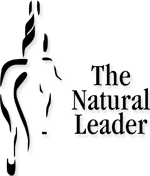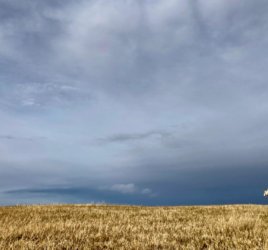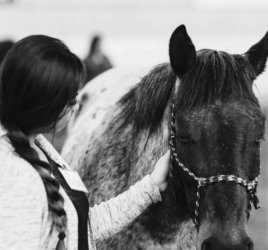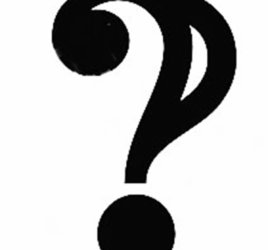What motivates or drives you? Are your goals personal or do you seek external reward? In The Natural Leader program’s these questions often show up as we examine internal versus external goals of leadership
In one of those mind-blowing moments, I realized how internal versus external indicators apply to my horsemanship. While they are concepts that relate to everything I do with a horse I’d not really, and I mean really, considered how I applied them in my riding and every request I make of my horses.
It was a series of questions on cues versus aids that helped me see the missing piece of my puzzle.
The first What is it I envision the horse doing? In other
From that thought— How do I allow my horse to tune-in to me? What are my cues? How does my body, reflect that thought and prepare the horse? Sadly, I now recognize I too quickly go to the external aid, the rein or the leg before the horse even has the opportunity to recognize that my
When the pupil is ready the teacher will appear. A quote that has been attributed to various sources, including Buddha, but one that more likely comes from the work of Mabel Collins in “Light on the Path”1 from 1886. It is a thought that has been relevant many times through my career and horsemanship journey.

Ray Hunt changed everything for me with the idea of connecting the rein to the feet, a tactic Buck Brannaman helped me refine over the years. Without expressly defining them, Buck has used a lot of stories and examples
In the chaos of these large format clinics refined learning is challenging and the clinician’s teaching often defaults to the level of the least competent rider. My learning had stalled and I was beginning to have serious “competence” thoughts as progress seemed incremental2. My internal indicators were more frustration than joy.
That joy was reignited last week! By luck or circumstance, I found Marty Gardner of Flattop Horsemanship. His website piqued my interest and that he is less than 2 hours away I booked a private lesson and hooked up the trailer.
Marty asks great questions, he refueled my passion and created even more questions. It will take me a few days to test and process my learning, writing this down is a good start. How do I see the horse moving as a result of my request? How do I set the horse up to be successful? How will I know I have achieved what I was looking for?
While Marty didn’t use the terms “internal or external indicators” that is a concept that rang true from my own work. In just two hours his questions opened up a world of possibility for me, as I begin to ride the horse I wish to see. Whether it’s my breath, a turn of my head, or a lifting of my chin
“This is something I have had to develop in myself, for myself, by myself. The True Unity and Willing Communication between the horse and me is not something that can be handed to someone, it has to be learned, it has to come from the inside of a person and inside of the horse.” Tom Dorrance
True Unity, Willing communication between horse and human
As I become more aware, more sensitive to the cues I offer the more responsive my horses already are. The idea of a bridle horse means I no longer need the bit, an external indicator, as a measure of control but simply to signal or cue the request. So then what are my internal indicators of success? Well, that will be when my horse and I appear to move as one. When the external indicators of the aid are all but invisible.
Doing less to achieve more is an idea that rates high on what is important in my horsemanship. Differentiating my actions, cues versus aids is critical to attaining a higher level of horsemanship. Does it matter who else sees that? Perhaps, but this is a conversation with myself and my horses and I’m fairly sure they will appreciate it.
1 “For when the disciple is ready the Master is ready also.” https://www.theosophical.org/files/resources/books/LightonthePath/LOTP.pdf
2 – For too long I’ve relied on annual clinics as a way to measure my progress. In fitting with the year, 2020, hindsight is everything I wish I hadn’t waited so long. We all need perspective to help us be our best. Find someone near you who can be that coach, your editor to help bring out the best in you, Marty Gardner www.FlattopHorsemanship.comjust happens to suit where I am at in my horsemanship.



